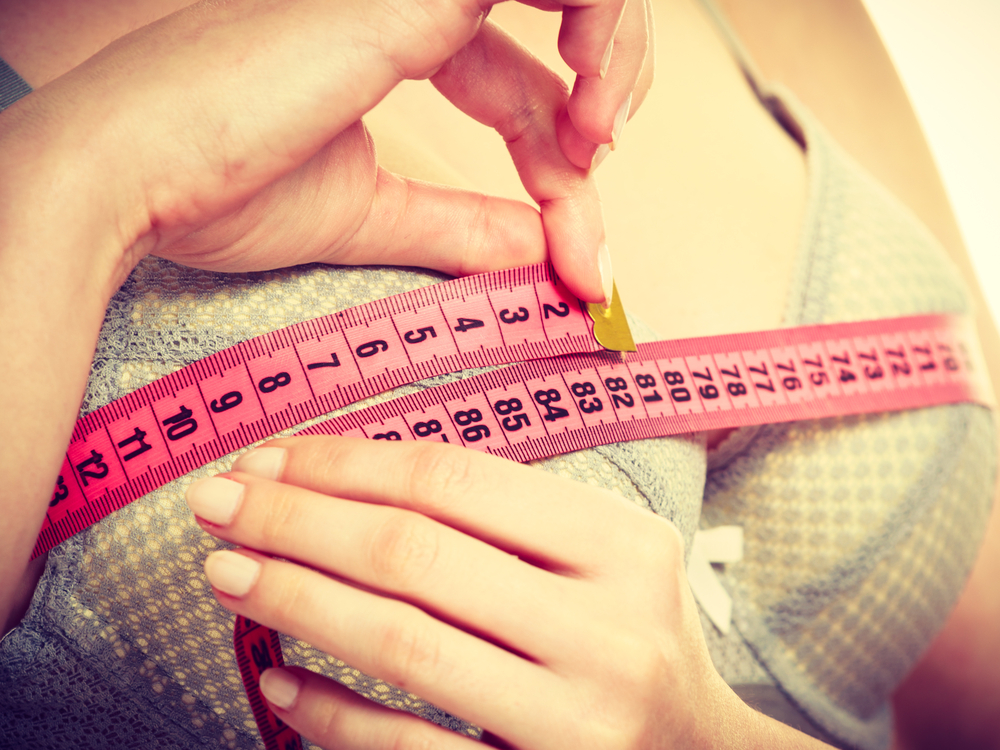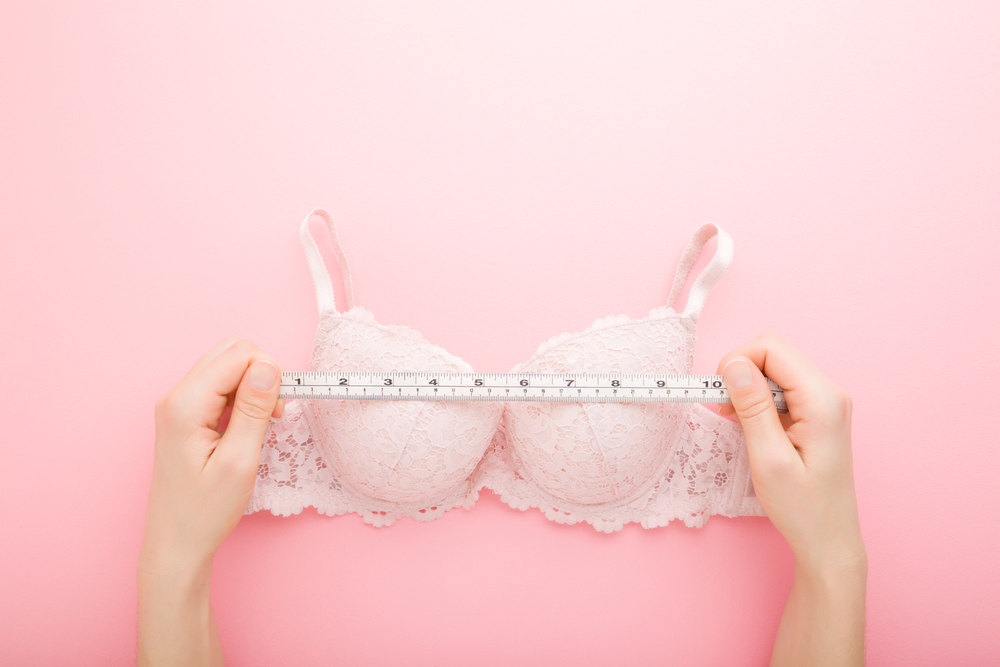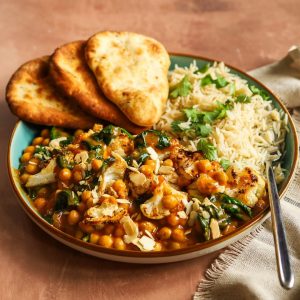It’s reported that up to 80% of bra wearers are wearing the wrong size. This can lead to ill-fitting clothes, redness of the skin, or even neck and back pain…
Here, Chums reveals exactly how to measure yourself for a bra at home, including the science and how to determine cup size.
How to Measure Your Bra Size
If taking your own measurements sounds complicated, don’t worry. It’s easy to measure your own bra size—and even easier if you have someone to assist you. However, it’s important to remember that your measurements are only part of the equation. Different styles of bras can fit differently, so you may need to try out various styles before you find the one that’s perfect for you.
In any case, taking your measurements will ensure you get the right size and reduce the chances of your bra not fitting properly. A bra size—such as 36D, for instance—consists of two parts. The number, in this case 36, refers to the band size or the circumference of your chest. The letter, on the other hand, indicates the cup size, starting from A and increasing as the alphabet progresses.

How to Measure Band Size
To measure your band size, you’ll need a flexible tape measure—preferably one that measures in inches. The number of your bra size represents the circumference of the underband of your bra—that is, the part that goes around your ribcage, underneath your breasts, and clips together at the back (or front, in front-fastening bras) to keep the bra in place.
To find this number, measure the circumference of your ribcage at the point where the band would sit. It’s easiest to do this while wearing a bra that fits well. Ensure that the measuring tape is snug against your body—A bit of wiggle room will be added later. Remove the tape measure and add three inches to the number you obtained. This provides a little breathing room, which can be adjusted to suit your preferences by utilising the different sets of hooks on the band to tighten or loosen the bra as needed.
Bras almost always come in even-number sizes. If your measurements yield an odd number, choose the next size up rather than sizing down.
How to Measure Cup Size
To delve into the specifics, cup size isn’t actually a measurement of volume, as you might expect. Instead, it represents the difference between two measurements—the underbust circumference you just measured to find the band size and the circumference of the fullest part of your bust.
The scale starts at AA, which indicates no difference between the two measurements. From there, each inch of difference corresponds to the next cup size—but it’s not quite as simple as moving through the alphabet.

Some sizes have single letters, while others have double letters—but each one is a full size on its own, not a half size. For instance, if the difference between your two measurements is eight inches, your cup size should be FF or double F. Here’s how the sizing goes:
- • AA
- • A
- • B
- • C
- • D
- • DD
- • E
- • F
- FF
- G
- GG
- H
- H
If you need a larger cup size, the scale continues with I, J, JJ, K, L, LL and M cups.
So how do you measure it?
You already have your underbust size from measuring the band size – please note that for this measurement, you’ll need the original number you recorded on the tape, not the one with three extra inches added or the one you rounded up to get an even number. Now, measure again using the same method, but a little higher, at the fullest part of your bust. Again, check to ensure the tape is snug and straight before writing down the measurement in inches.
Next, subtract the band measurement from the bust measurement to determine the difference. The corresponding letter will indicate your cup size – combine it with the band size mentioned earlier, and you’ll be well on your way to finding a perfectly fitting bra.





